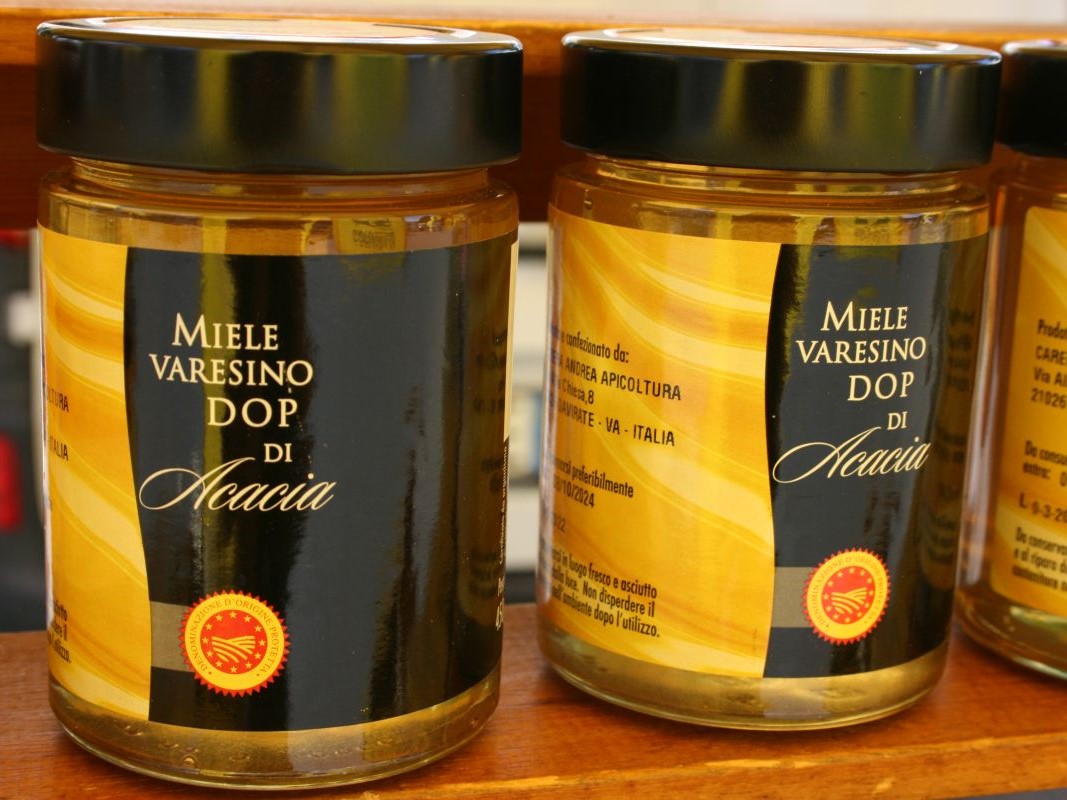
 We the Italians Editorial Staff
We the Italians Editorial Staff
Italian flavors: Varesino DOP acacia honey, a Lombard treasure rooted in nature and tradition
- WTI Magazine #188 Jun 20, 2025
-

 We the Italians Editorial Staff
We the Italians Editorial Staff
Varesino DOP Acacia Honey is among the most refined and prized designations found in Lombardy. Honey has gently accompanied humankind throughout history — the earliest beehives, man-made shelters where bee colonies live, date back to the 6th millennium BC. For centuries, honey was the only sweetening food available. Called the “food of the gods” by the ancient Greeks, today honey is also consumed for its therapeutic anti-inflammatory, sedative, and detoxifying properties.
Varesino DOP Acacia Honey is a monofloral honey made from nectar collected — or, as beekeepers say, “foraged” — by bees from the flowers of Robinia pseudoacacia. It is known for its high level of nectar purity, made possible by specific territorial and climatic conditions. In the Varese area, Robinia pseudoacacia is widespread and, in many areas, is the dominant tree species in the forests. Additionally, during its flowering season, there are no competing nectar-producing plants blooming in large quantities. Originally native to North America, the species was introduced to Italy in the late 18th century as an ornamental tree and found an ideal habitat in the Province of Varese.
This honey is the most recent of the three Italian honeys to be awarded Protected Designation of Origin (DOP) status. Though the designation was only officially recognized in 2014, the product itself has deep roots in the area, particularly in the pre-Alpine foothills. The entire Province of Varese constitutes the official production zone — both for honey collection in the field and for its extraction and preparation for consumption. Apiaries, where the beehives are placed, must be located in plains or hills at altitudes not exceeding 600 meters (about 2,000 feet) above sea level. This area has a temperate continental climate, with moderate seasonal temperature variations softened by the nearby lakes. These conditions support the flowering of acacia and other exotic species that have grown in the gardens and parks of Varese villas since the 17th century and are now also found in the local understory. It’s not uncommon, for example, to find pollen from Trachycarpus fortunei (Chinese windmill palm) in the pollen spectrum of this honey.
Beekeeping has always played a vital role in the rural economy of this area. In the early 1900s, two major developments gave a significant boost to the industry. First, with the expansion of the Italian railway network, Robinia was widely planted to stabilize rail embankments thanks to its extensive root system. At the same time, traditional “villica” (village-style) beekeeping evolved into modern beekeeping, using movable-frame hives, which made it possible to produce monofloral honeys — something impossible under the old fixed-hive system. These innovations led local beekeepers to specialize in acacia honey, which, thanks to its distinctive qualities, quickly stood out from other varieties and soon became the most widely produced honey in the region.
To produce it, vertical movable-frame hives must be used. The supers — the wooden boxes that hold the honeycombs where bees store honey — must be clean and empty at the time of harvest. Honey is extracted only from combs without brood and must be processed using centrifugal honey extractors.
Filtering is done by gravity using permeable filters. Once filtered, the honey is left to settle in lidded containers. It can be stored, packaged, and labeled for up to 24 months after extraction. The sensory characteristics of Varesino DOP Acacia Honey are unique: it has a liquid consistency, a clear straw-yellow color, and does not crystallize. Its aroma is light and delicate, with a very sweet taste and subtle hints of candy and vanilla. It’s perfect for breakfast, desserts, and pastries, and also pairs beautifully with fresh cheeses like robiola or chèvre.
Production is highly dependent on weather conditions between late April and early May, the acacia’s flowering period. The official production area stretches across the foothills of the Alps, between the Ticino and Olona Rivers, and between Lake Maggiore and Lake Lugano — an area that corresponds to the entire Province of Varese in Lombardy.